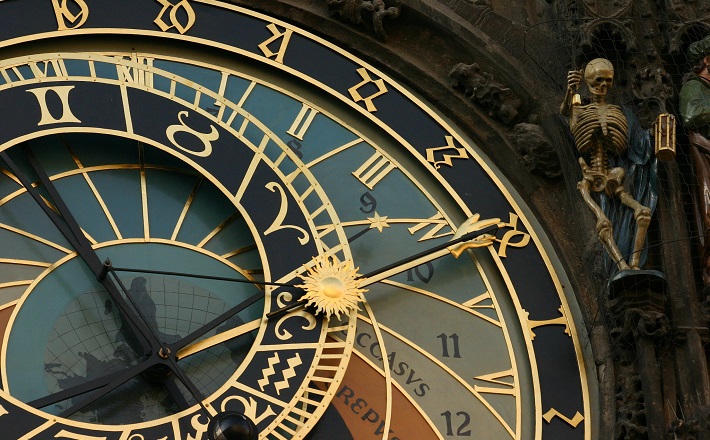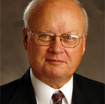Commentary on Matthew 24:36-44
The Gospel readings for the four Sundays in Advent, Year A, follow the pattern for all three years (A, B, and C).
According to the over-all design of the three-year lectionary,1 the Gospel texts for the First Sunday are always apocalyptic, anticipating the Parousia, the second coming of Christ.
Readings for the Second and Third Sundays focus on the preaching and ministry of John the Baptist as the forerunner of the Messiah’s first coming. The Gospel readings assigned for the Fourth Sunday proclaim the annunciation of the Nativity. Consequently, over the four Sundays in Advent there is a shift from anticipating the dramatic, disruptive consummation of all things to the more tender tone of preparing for the Nativity.
The reading for the First Sunday in Advent, Year A, is set within the larger unit of Matthew 24:1-25:46 containing a lengthy discourse (the fifth in this gospel), in which Jesus speaks of last things. Just prior to the discourse, Jesus’ disciples asked him concerning “the sign of [his] coming and the end of the age” (24:3).
Jesus responds, warning them about imposters who proclaim either themselves or others as the Christ (24:5, 11, 23-26) and thereby lead many astray. He also speaks of the tribulations of the last time and the coming of the Son of man. He assures his disciples that his coming as the Son of man will be known to them because it will be announced by his angels, who will also gather the elect (24:31). It is important in the meantime that the disciples remain faithful to him (24:13), whose “words will not pass away” (24:35).
The part of the discourse assigned for the First Sunday in Advent begins abruptly and without warning. It takes up the question of timing. The point is made that no one — not even the angels nor the Son — knows the time of the coming of the Son of man; the only one who knows is God (24:36). For good measure, Jesus adds that the disciples, likewise, do not know (24:42). In fact, his coming will be at an hour they do not expect (24:44). Therefore they are to be ready at all times for his coming.
The passage thus speaks of Christology (Jesus is spoken of as Son of man and Lord), eschatology (the time of his coming as Son of man is indefinite), and discipleship (it is incumbent upon Jesus’ followers to be ready for his coming as Son of man at all times).
The passage consists of several parts:
1. A saying about the coming of the Son of man (24:36);
2. Three illustrative sayings (24:37-41);
3. An exhortation to watchfulness (24:42);
4. A fourth illustrative saying (sometimes called the parable of the nocturnal burglar, 24:43); and
5. An exhortation to readiness (24:44).
The first of the illustrative sayings (24:37-39) refers to the story of Noah in Genesis 6-7. It is important to notice that there is no moral judgment passed here upon the proverbial wickedness of the people in Noah’s day (in contrast to 2 Peter 2:5, where it is said that God “brought a flood on a world of the ungodly”). Their activities of “eating and drinking, marrying and giving in marriage” are normal; that’s what people do.
Rather, the story is used to illustrate the sudden and unexpected act of God. The people of Noah’s day were not prepared for it. The flood came and swept them away. So, too, the coming of the Son of man will take place as a divine action, and most people will be taken by surprise.
The other two sayings (24:40-41) portray men and women doing normal tasks (working in the field, grinding at the mill) at the time of the coming of the Son of man. The judgment upon them (“one will be taken and one will be left” in each instance) is not on the basis of their activities or apparent conduct — for both those taken and those left are doing the same things — but on the basis of the Son of man’s own judgment. He acts in sovereign freedom to judge. It is implied that those who are taken (saved) are those who have confessed Jesus as Son of man and have followed him (cf. 19:28 and the Q saying, 10:32-33).
The saying about the nocturnal burglar who breaks into a house (24:43) has to do with the theme of watchfulness. If the details are pressed, it would mean that, as the watchfulness of a homeowner prevents a burglar’s intrusion, so too the watchfulness of disciples forestalls the coming of the Son of man. But that would be a case of over-blown interpretation.
The point of comparison is that Jesus’ disciples are not to be like the homeowner (unaware, inattentive) who lets his house get broken into by a thief. The use of the comparison between the coming of the Lord and the incursion of a thief in the night appears elsewhere in the New Testament as well (1 Thessalonians 5:2-4; 2 Peter 3:10; Revelation 3:3; 16:15).
The future orientation of the First Sunday in Advent is prominent in all three lessons for the day. It would seem wise for the preacher to stick with that. It will give way soon enough to preparation for the first coming of Christ — first, the adult Jesus of whom the Baptist speaks, and then the baby born in Bethlehem.
The saying in 24:43 about the nocturnal burglar can be dressed up in more modern imagery. People install timer lights, yard lights, and alarm systems to ward off possible intruders. Flying in an airliner on a clear evening over rural areas, but low enough to see the ground, one can see yard lights in farms and villages that are for security.
All seems beautiful and peaceful. These are signs of vigilance. So, to adhere to what is said in the text, believers in Christ will likewise be vigilant for the coming of Christ in his own good time — a time that cannot be predicted. Therefore it is appropriate, as the saying goes, to live each day as though it may be the last. We cannot postpone fulfilling our commitments to be the persons we aspire to be.
We may well wonder what that means. The other figurative sayings in 24:40-41 can offer insights. Ordinary secular duties continue. Being prepared for the coming of the Lord takes place in daily dying and rising, living out our baptism and faith in this world.
A problem with apocalyptic passages is that they frighten some Christians, or they are dismissed by others as dispensable for the Christian faith (one of those things that a person need not believe). But the message of Christ’s return is not meant to frighten us. It is to give us hope.
The Christ who is to come is the Christ who once lived among us on earth, and who is known in the gospel story as the friend and healer of those in need. Moreover, living in hope, expecting Christ’s return, is integral to the Christian faith, for by it we insist that there is more to the human story and God’s own story than that which has been experienced already.
The hope we have is not personal only, and it certainly is not simply private. It is a communal hope. The church is a community of hope and responsibility in the world. Far from deflating the Christian faith of worldly care, turning attention only to that which is beyond history, Christian hope in the future coming and reign of Christ can generate a commitment to the future and the public good of humanity in this world. The promises of God urge Christians to lean forward toward the future in its entirety.
—–
1 The Revised Common Lectionary (Nashville: Abingdon Press, 1992) 14.


December 1, 2013